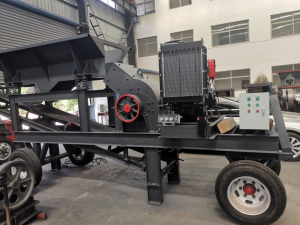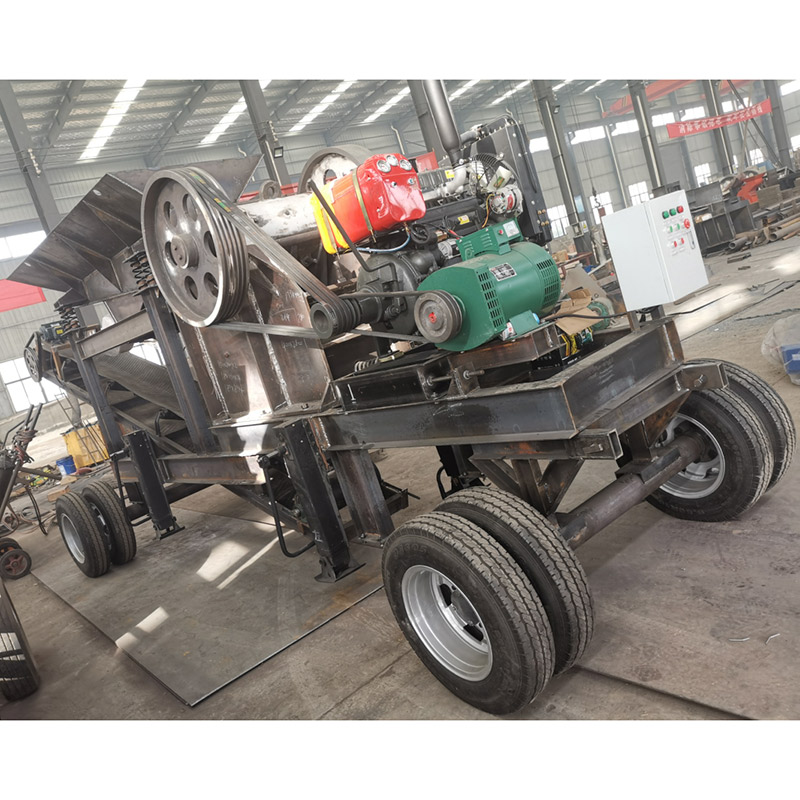Mobile diesel engine sand making Hammer Crusher mill Machine
Detailed Pictures


Working Principle
The motor drives the rotor to run at high speed. The material enters from the feeding mouth and collides strongly with the hammer on the rotor. After collision with the hammer, the material collides with the liner and grate/sieve plate, so as to screen out the appropriate discharging size. (secondary crusher)

Specifications
|
Model |
Max. feeding size (mm) |
Output size (mm) |
Capacity (t/h) |
Motor Power (kw) |
Weight (kg)
|
|
PC300×200 |
≤100 |
≤10 |
2-5 |
5.5 |
600
|
|
PC400×300 |
≤100 |
≤10 |
5-10 |
11 |
800
|
|
PC600×400 |
≤120 |
≤15 |
10-25 |
18.5 |
1500
|
|
PC800×600 |
≤120 |
≤15 |
20-35 |
55 |
3100
|
|
PC1000×800 |
≤200 |
≤15 |
20-40 |
115 |
7900
|
|
PC1000×1000 |
≤200 |
≤15 |
30-80 |
132 |
8650
|
|
PC1300×1200 |
≤250 |
≤19 |
80-200 |
240 |
13600 |
Advantages
1. Set on the frame with wheels, easy to move and flexible.
2. It has compact structure, simple operation, high crushing ratio and fine discharge.
3. In the sand making line, it generally used ( jaw crusher+belt conveyor+vibrating feeder+mobile hammer crusher) to form a high efficiency sand making line.


Application


Working Site


Spare Parts








